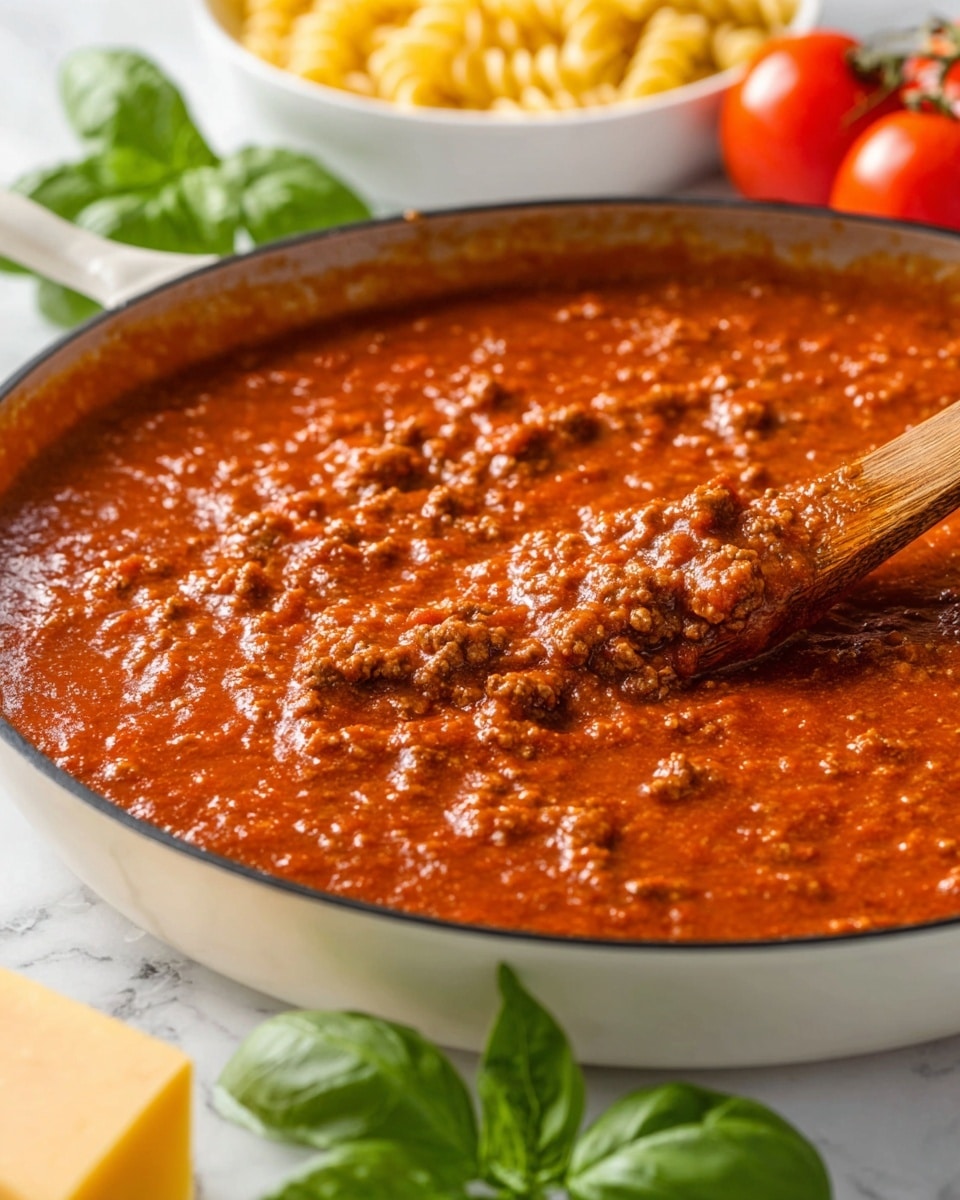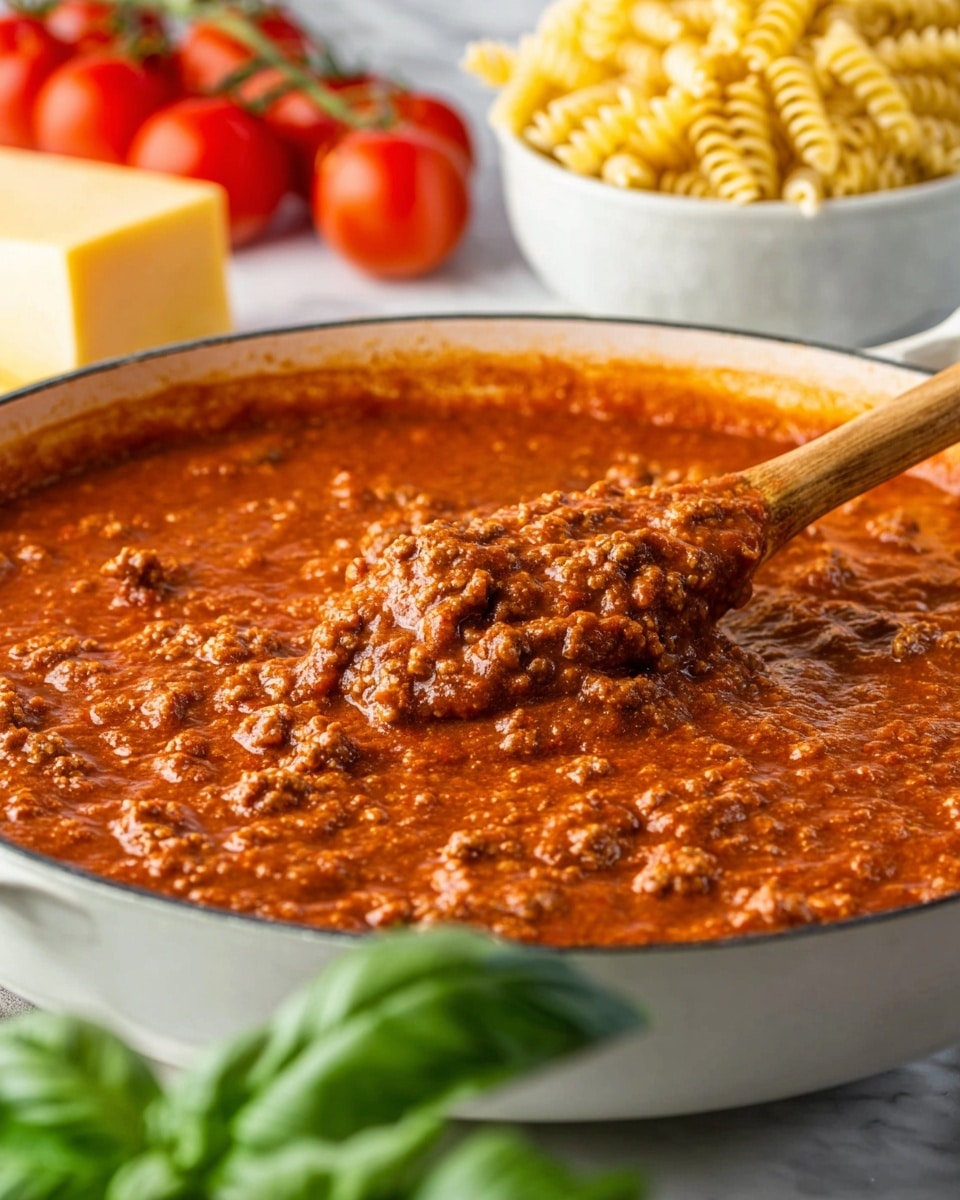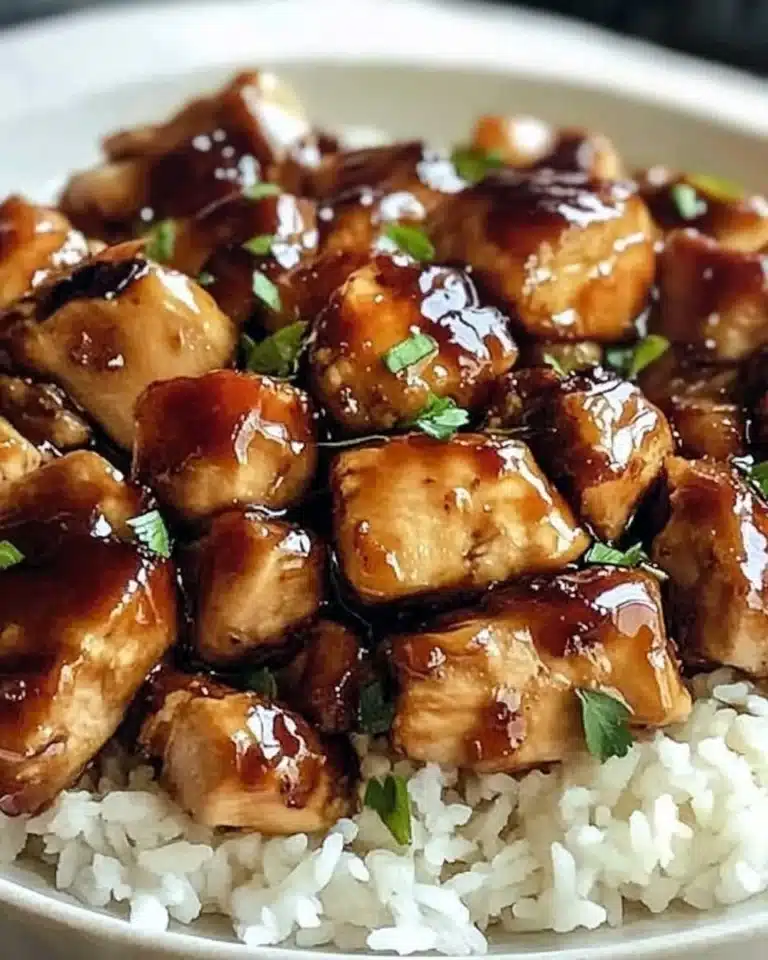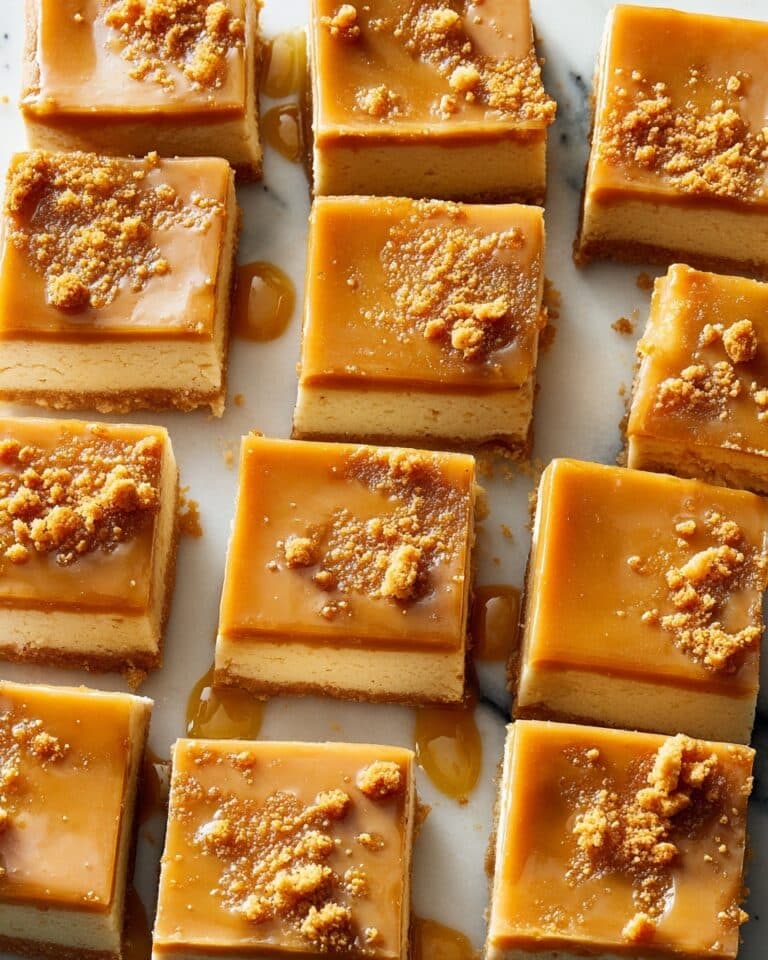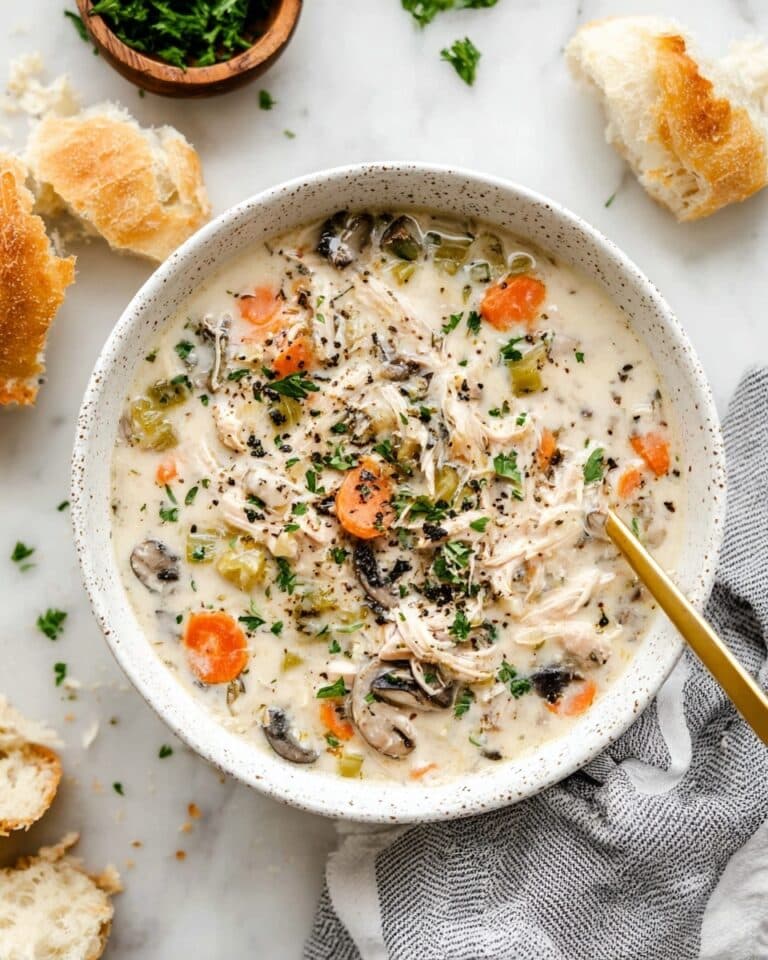I absolutely love sharing this Classic Bolognese Sauce with Pasta Recipe because it’s the ultimate comfort food that fills your kitchen with the most amazing aromas. When I first tried making Bolognese at home, I was surprised how approachable it actually is—no fancy skills required, just good ingredients and patience. You’ll find that this sauce brings warmth and richness to any weeknight dinner or special gathering, making it totally worth the slow-simmering time.
What makes this Classic Bolognese Sauce with Pasta Recipe so special is its balance of flavors—from the finely diced veggies to the mix of ground beef and Italian sausage, it all comes together into something truly hearty and satisfying. Plus, the splash of milk towards the end is a little trick I discovered that softens the sauce beautifully, giving it a creamy texture without overpowering the tomatoes. Grab your apron; I’m excited to take you through every step to help you nail this dish with confidence!
Why You’ll Love This Recipe
- Deep, Authentic Flavor: Slow simmering builds rich layers that make every bite satisfying.
- Perfect for Any Occasion: Elegant enough for guests, but easy enough for weeknights.
- Balance of Ingredients: The combo of beef, sausage, and pancetta creates an irresistible meaty base.
- Family Favorite: My family goes crazy for this sauce—it’s a guaranteed crowd-pleaser!
Ingredients You’ll Need
Each ingredient in this Classic Bolognese Sauce with Pasta Recipe plays a key role in the sauce’s signature flavor and texture. I always recommend using fresh vegetables finely diced to help them melt into the sauce, plus quality meats to keep the sauce rich and hearty.
- Olive oil: A good base for sautéing veggies and meat, brings a fruity touch.
- Onion, carrot, celery: The classic soffritto trio—finely diced to melt seamlessly into the sauce.
- Minced garlic: Adds a fragrant warmth, don’t skip it or the sauce feels flat.
- Pancetta or bacon: This little addition brings smoky depth and richness.
- Ground beef: Choose lean but flavorful—this is the heart of the sauce.
- Mild Italian sausage: Adds spice and texture that beef alone can’t deliver.
- Salt and cracked black pepper: Basic but essential seasoning to wake up the flavors.
- Fresh grated nutmeg: Just a hint gives that traditional Bolognese warmth.
- Dry white wine: Helps deglaze the pan and lifts the entire sauce with acidity.
- Beef broth: Builds savory depth, making the sauce hearty.
- San Marzano crushed tomatoes: These are sweeter and less acidic, perfect for the sauce.
- Tomato paste: Concentrates the tomato flavor, giving it body.
- Fresh thyme and bay leaf: Aromatics that subtly infuse herbal notes.
- Whole milk: A game-changer—softens acidity and enriches the sauce.
- Pasta: Any sturdy pasta like pappardelle or fettuccine works beautifully.
Variations
I love encouraging you to make this Classic Bolognese Sauce with Pasta Recipe your own. Whether you have dietary preferences or just want to switch up the flavors, small tweaks can keep this recipe feeling fresh and exciting every time you make it.
- Vegetarian Variation: I’ve swapped out the meat for lentils and mushrooms before, and it still delivers a rich texture and flavor.
- Spicier Version: Adding red pepper flakes or using spicy sausage adds a kick that my spice-loving friends adore.
- Wine Substitution: If you don’t have white wine, you can use red wine or extra broth; I’ve done this in a pinch with good results.
- Herb Changes: Swap thyme and bay for rosemary or oregano for a different herbal vibe I’ve enjoyed.
How to Make Classic Bolognese Sauce with Pasta Recipe
Step 1: Gently Sauté Your Sofritto
Start by heating olive oil in a large saucepan, then add your finely diced onions, carrots, and celery. I always finely dice these so they virtually disappear into the sauce, giving it body without chunky veggies. Cook them over medium-low heat for about 5 minutes—your goal is to soften, not brown, so keep an eye on the heat and stir occasionally to avoid burning. Once softened, scoop them out and set aside for later.
Step 2: Brown the Meat Mix
Next, add the ground beef, Italian sausage, and pancetta to the same pan. This part is key: I like to break up the meat finely with my spatula as it cooks so the texture is tender. Cook until the meat loses its pink color and gets a nice little browning—not too much drying out, though. Season it with salt, pepper, and freshly grated nutmeg, then stir the sautéed veggies back in.
Step 3: Deglaze and Simmer with Tomatoes
Pour in the dry white wine to deglaze the pan—this helps loosen up all those flavorful browned bits stuck to the bottom. Let it simmer for about 5 minutes so the alcohol cooks off and the liquid reduces slightly. Then add the beef broth, crushed San Marzano tomatoes, and tomato paste, stirring everything together well. Toss in the sprig of fresh thyme and bay leaf, cover partially, and simmer on low for 1 to 2 hours. This slow simmering is what gives your classic Bolognese sauce that incredible depth.
Step 4: Finish with Milk
When you’re about 15 minutes from serving, stir in the whole milk. This step came as a delightful surprise in my early Bolognese experiments—it mellows the acidity and makes the sauce silky without making it creamy like a cream sauce. Let it gently simmer in for those last minutes, then remove the herbs. Your sauce is now perfectly balanced and ready for the final step!
Step 5: Cook Pasta and Serve
Just before serving, cook your pasta according to package instructions—remember, this sauce is rich, so I love hearty pasta shapes like pappardelle or fettuccine that hold the sauce well. Toss the pasta right in the sauce or ladle plenty on top for serving. Don’t forget some freshly grated Parmesan for a finishing touch – it’s unbeatable.
Pro Tips for Making Classic Bolognese Sauce with Pasta Recipe
- Finely Dice Your Veggies: This ensures they melt into the sauce and add subtle sweetness without texture distractions.
- Brown Meat Properly: Take your time to brown the meat well for that deep, roasted flavor—avoid steaming by keeping the pan hot and not crowding it.
- Simmer Low and Slow: Patience is key; a longer simmer means more flavor development and tender texture.
- Don’t Skip the Milk: It softens acidity and rounds out the sauce beautifully—add it toward the end to keep the balance just right.
How to Serve Classic Bolognese Sauce with Pasta Recipe
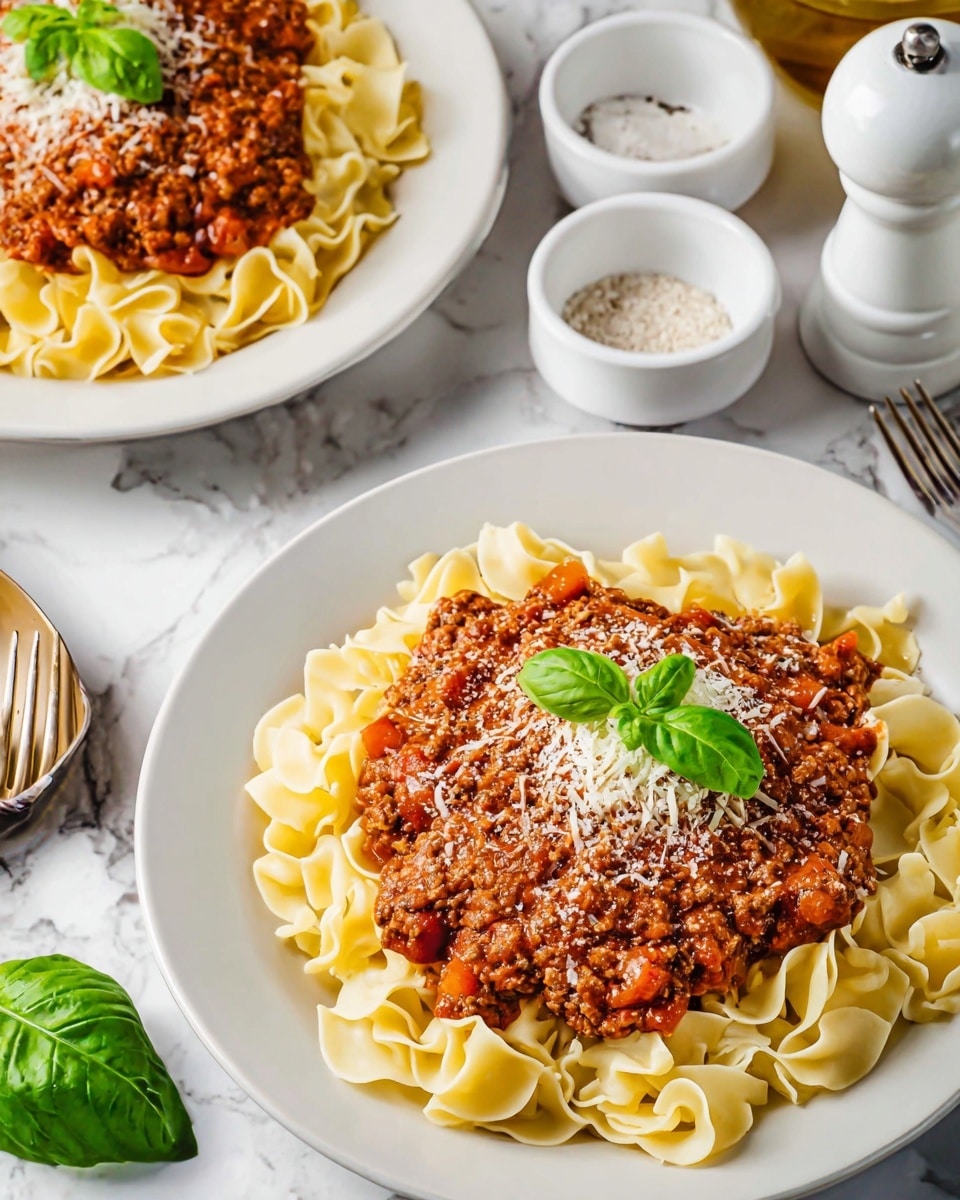
Garnishes
I always finish this dish with a generous sprinkle of freshly grated Parmesan and a crack of black pepper—simple, but it brings out every nuance in the sauce. Fresh basil or flat-leaf parsley makes a lovely green pop and freshens the bite, especially on warmer days. If you’re feeling indulgent, a drizzle of extra virgin olive oil just before serving is pure magic.
Side Dishes
When serving, I pair it with a crisp green salad dressed lightly with lemon vinaigrette to cut through the richness. Crusty garlic bread or a warm loaf of Italian bread is also perfect to soak up every last bit of sauce—my kids always fight for the last piece! Roasted vegetables or steamed green beans offer a great fresh contrast too.
Creative Ways to Present
For special occasions, I like serving this Classic Bolognese Sauce with Pasta Recipe layered in individual bowls topped with a tuft of fresh ricotta or burrata cheese. Another fun idea is to use the sauce as a filling for baked pasta shells or lasagna—my family loves this twist for celebrations and leftovers. You can even turn it into a hearty stuffed pepper filling for something a bit different.
Make Ahead and Storage
Storing Leftovers
I store leftover Bolognese sauce in airtight containers in the fridge for up to 4 days. It actually tastes even better the next day when the flavors have had more time to meld. Just make sure it’s cooled down before refrigerating to keep it fresh and juicy.
Freezing
Freezing this sauce is a lifesaver on busy days. I portion it into freezer-safe containers or bags, removing as much air as possible to avoid freezer burn. It freezes beautifully for up to 3 months—just thaw in the fridge overnight before reheating.
Reheating
To reheat, I prefer gently warming it on the stovetop over low heat, stirring occasionally and adding a splash of broth or water if it feels too thick. Microwaving works in a pinch, but slow reheating retains the texture and flavor way better. You’ll want the sauce warm and slightly bubbling for the best experience.
FAQs
-
Can I make Classic Bolognese Sauce with Pasta Recipe ahead of time?
Absolutely! This sauce benefits from making ahead as the flavors deepen overnight. You can prepare it a day before serving and gently reheat when ready. It also freezes well for longer storage.
-
What pasta types work best with Bolognese sauce?
Hearty, wide noodles like pappardelle, tagliatelle, or fettuccine hold this thick, meaty sauce beautifully. If you prefer something different, rigatoni or penne are great for trapping the sauce with their grooves.
-
Can I use different meats in Classic Bolognese Sauce?
Yes, mixing ground beef with pork sausage and pancetta adds depth, but feel free to experiment with veal, turkey, or even all pork for variations. Adjust cooking times slightly if you use leaner meats.
-
Why do you add milk to the Bolognese sauce?
The milk gently tempers the acidity from the tomatoes and wine while enriching the sauce’s texture, making it smooth and less tangy without adding creaminess like heavy cream would.
-
How long should I simmer the Bolognese sauce?
Simmering for 1 to 2 hours is ideal. The longer you go, the more the flavors meld and intensify. Just keep it on low heat with the lid partially on to prevent it from drying out.
Final Thoughts
This Classic Bolognese Sauce with Pasta Recipe is truly one of those dishes I recommend everyone have in their cooking repertoire. It’s approachable, forgiving, and best of all, utterly delicious. When you make it at home, you get to savor that slow-cooked, authentic Italian taste that fills your kitchen with warmth. Trust me—once you try this, it’ll become a weekly favorite in your house, just like it did in mine!
Print
Classic Bolognese Sauce with Pasta Recipe
- Prep Time: 10 minutes
- Cook Time: 1 hour 15 minutes
- Total Time: 1 hour 25 minutes
- Yield: 8 servings
- Category: Main Dish
- Method: Stovetop
- Cuisine: Italian
Description
This classic Bolognese Sauce recipe features a rich and hearty meat sauce made with a combination of ground beef, Italian sausage, and pancetta, slowly simmered with aromatic vegetables, white wine, tomatoes, and fresh herbs. Creamy whole milk is added at the end to balance the acidity, creating a deeply flavorful sauce perfect for tossing with your favorite pasta.
Ingredients
Vegetables
- 1/2 onion, very finely diced
- 2 carrots, very finely diced
- 2 celery stalks, very finely diced
- 1 1/2 tablespoon minced garlic, very finely diced
Meats
- 4 ounces pancetta or bacon, finely diced
- 1 pound ground beef
- 1 pound mild Italian sausage
Liquids and Sauces
- 1 tablespoon olive oil
- 1 cup dry white wine
- 1 cup beef broth
- 28 ounce can San Mariano crushed tomatoes
- 2 tablespoons tomato paste
- 1 cup whole milk
Seasonings and Herbs
- 1 teaspoon salt
- 1/2 teaspoon cracked black pepper
- 1/8 teaspoon fresh grated nutmeg
- 1 sprig fresh thyme
- 1 bay leaf
Additional
- 1 pound pasta, cooked according to package directions
Instructions
- Sauté the vegetables: Heat the olive oil in a large saucepan over medium-low heat. Add the finely diced onion, carrots, celery, and garlic. Cook gently for 5 minutes until softened but not browned. Remove the vegetables from the pan and set aside.
- Brown the meats: Add the pancetta, ground beef, and Italian sausage to the same pan. Cook over medium heat, breaking up the meat finely as it cooks, until no pink remains and the meat is well browned.
- Season and combine: Season the browned meat with salt, cracked black pepper, and freshly grated nutmeg. Stir in the sautéed vegetables.
- Deglaze with wine: Pour in the dry white wine and simmer over medium heat for 5 minutes to reduce slightly and develop flavor.
- Add broth and tomatoes: Stir in the beef broth, crushed San Mariano tomatoes, and tomato paste until fully combined.
- Simmer with herbs: Add the sprig of fresh thyme and bay leaf to the sauce. Reduce heat to low and allow the sauce to simmer gently for 1 to 2 hours, stirring occasionally to prevent sticking.
- Finish with milk: About 15 minutes before serving, stir in the whole milk and continue to simmer gently to meld the flavors and soften the acidity.
- Cook pasta and serve: Meanwhile, cook your pasta according to the package instructions. Drain and toss the pasta with the Bolognese sauce. Serve immediately.
Notes
- Finely dicing the vegetables and meat helps create a smooth, well-integrated sauce.
- Using San Mariano crushed tomatoes adds authentic Italian flavor, but any good quality crushed tomatoes will work.
- Adding milk at the end rounds out the acidity from the tomatoes and enriches the sauce.
- Simmering the sauce slowly for at least an hour allows the flavors to deepen and the texture to thicken.
- For a thicker sauce, cook a bit longer to reduce further.
Nutrition
- Serving Size: 1 cup sauce with pasta
- Calories: 410
- Sugar: 7 g
- Sodium: 560 mg
- Fat: 22 g
- Saturated Fat: 8 g
- Unsaturated Fat: 12 g
- Trans Fat: 0.2 g
- Carbohydrates: 28 g
- Fiber: 4 g
- Protein: 28 g
- Cholesterol: 85 mg

